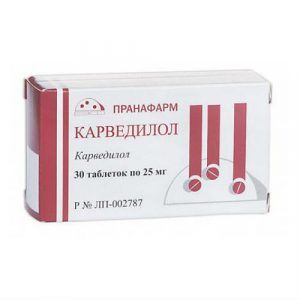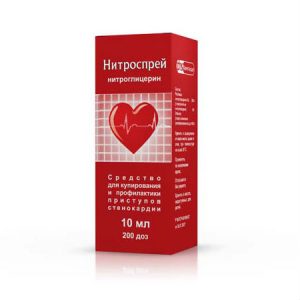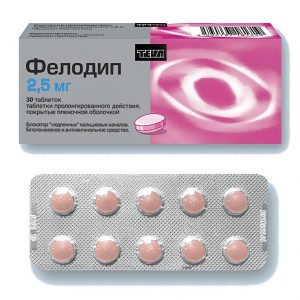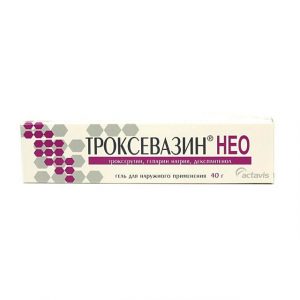Description
Release form
Injection.
Packing
10 ampoules of 5 ml.
Pharmacological action
When administered parenterally, it has an anticonvulsant, antiarrhythmic, hypotensive, antispasmodic effect, in large doses it inhibits neuromuscular transmission, has a tocolytic effect, and suppresses the respiratory center.
Magnesium is a physiological blocker of slow calcium channels and is able to displace it from binding sites. Regulates metabolic processes, interneuronal transmission and muscle excitability, prevents the flow of calcium ions through the presynaptic membrane, reduces the amount of acetylcholine in the peripheral nervous system and central nervous system (CNS). It relaxes smooth muscles, lowers blood pressure (BP) (predominantly elevated), and increases diuresis.
Anticonvulsant effect – magnesium reduces the release of acetylcholine from neuromuscular synapses, while inhibiting neuromuscular transmission, has a direct inhibitory effect on the central nervous system.
Antiarrhythmic action – magnesium reduces the excitability of cardiomyocytes, restores ionic equilibrium, stabilizes cell membranes, disrupts sodium flow, slow incoming calcium current and one-way potassium current.
The cardioprotective effect is due to the expansion of the coronary arteries, a decrease in the total peripheral vascular resistance and platelet aggregation.
Tocolytic effect – magnesium inhibits the contractility of the myometrium (decreased absorption, binding and distribution of calcium in smooth muscle cells), increases blood flow in the uterus as a result of the expansion of its vessels.
It is an antidote for poisoning with salts of heavy metals.
Systemic effects develop almost instantly after intravenous (iv) administration.
Duration of action with a / in the introduction – 30 min.
Indications
– correction and prevention of hypomagnesemia, including diabetes mellitus, complete parenteral nutrition, diuretics, muscle relaxants, chronic alcoholism, malabsorption
– arrhythmia (supraventricular hypertension, tachycardia, tachycardia) including hypertensive crisis with symptoms of cerebral edema
– convulsive syndrome (leg cramps, muscle twitching, tremors and tetanic spasms)
– preeclampsia and eclampsia
– premature birth, late pregnancy toxicosis
– poisoning with salts of heavy metals: arsenic, tetraethyl lead, soluble barium salts.
Contraindications
– myasthenia gravis
– bradycardia
– severe arterial hypotension
– hypocalcemia
– prenatal period (2 hours before delivery)
– severe renal dysfunction (hypercensity min.
Special instructions
It should be borne in mind that IM injections are extremely painful and lead to the formation of infiltrates.
Magnesium sulfate should be used carefully so that a toxic concentration of the drug does not occur. Elderly people should usually use a reduced dose, as they have reduced kidney function. Patients with impaired renal function (if creatinine clearance is more than 20 ml / min) and oliguria should not receive more than 20 g of magnesium sulfate (81 mmol Mg2 +) within 48 hours, magnesium sulfate iv should not be administered too quickly. It is recommended to control the concentration of magnesium ions in the blood serum (should not be higher than 0.8-1.2 mmol / l), diuresis (not less than 100 ml / h), respiratory rate (not less than 16 / min), blood pressure.
When magnesium sulfate is introduced, it is necessary to have a calcium solution prepared for iv administration, for example, a 10% calcium gluconate solution. If necessary, the simultaneous iv administration of magnesium and calcium, they are injected into different veins. When using magnesium sulfate, the results of radiological studies for which technetium is used can be distorted.
Composition of
1 ampoule (5 ml) contains:
active ingredient magnesium sulfate – 1.25 g,
excipient – water for injection.
Dosage and Administration
Serum magnesium levels must be monitored before and during treatment. The dose of magnesium sulfate should be selected individually depending on the needs of the patient and the response to treatment.
Excess serum magnesium> 2.5 mmol / L should be avoided.
Doses of magnesium sulfate are given in grams.
The following amount of solution corresponds to them: 1 g – 4 ml (25%), 2 g – 8 ml (25%), 3 g – 12 ml (25%), 4 g – 16 ml (25%), 5 g – 20 ml (25%), 10 g – 40 ml (25%), 15 g – 60 ml (25%), 20 g – 80 ml (25%), 30 g – 120 ml (25%), 40 g – 160 ml (25%).
1 ml of a 25% solution of magnesium sulfate contains 1 mmol of magnesium.
Side effects
Slowing the respiratory rate shortness of breath acute circulatory failure weakening reflexes hyperemia arterial hypotension hypothermia weakening of muscle tone atony of the uterus hyperhidrosis anxiety pronounced sedation polyuria reduction of heart rate changes in the electrocardiogram.
The drug reduces the excitability of the respiratory center, large doses of the drug with parenteral administration can easily cause respiratory paralysis.
Early signs and symptoms of hypermagnesemia: bradycardia, diplopia, sudden rush of blood to the face, headache, decreased blood pressure, nausea, shortness of breath, blurred speech, vomiting, general weakness.
Signs of hypermagnesemia, ranked in order of increasing concentration of magnesium ions in the blood serum: decrease in deep tendon reflexes (2-3.5 mmol / l), lengthening of the PQ interval and expansion of the QRS complex on an electrocardiogram (2.5-5 mmol / l), decrease in tendon reflexes (4-5 mmol / l), inhibition of the respiratory center (5-6.5 mmol / L), impaired conduction of the heart (7.5 mmol / L), cardiac arrest (12.5 mmol / L).
Drug Interactions
Patients who use other drugs with Magnesium Sulfate should notify their doctor.
Enhances the effect of other drugs that depress the central nervous system.
Cardiac glycosides increase the risk of impaired conduction and atrioventricular block (especially with simultaneous iv administration of calcium salts).
Muscle relaxants and nifedipine enhance neuromuscular blockade.
With the combined use of magnesium sulfate for parenteral administration with other vasodilators, an increase in the hypotensive effect is possible.
Barbiturates, narcotic analgesics, antihypertensive drugs increase the likelihood of depression of the respiratory center.
Violates the absorption of antibiotics of the tetracycline group, weakens the effect of streptomycin and tobramycin.
Calcium salts reduce the effects of magnesium sulfate.
Pharmaceutically incompatible (precipitates) with calcium preparations, carbonates, bicarbonates and phosphates of alkali metals, clindamycin phosphate, sodium hydrocortisone succinate, polymyxin B sulfate, procaine hydrochloride, salicylates and tartrates.
At concentrations of magnesium ions above 10 mmol / ml in mixtures for complete parenteral nutrition, separation of fat emulsions is possible.
Overdose
Symptoms: respiratory depression, depression of the central nervous system, up to the development of anesthesia.
Treatment: as an antidote for an overdose of magnesium sulfate, calcium preparations are used – calcium chloride or calcium gluconate.
Storage conditions
Do not store above 25 ° C.
Expiration
3 years.
Prescription conditions from
pharmacies Prescription
lekarstvennaja form
Solution for infusion
Borisov Plant, Belarus




